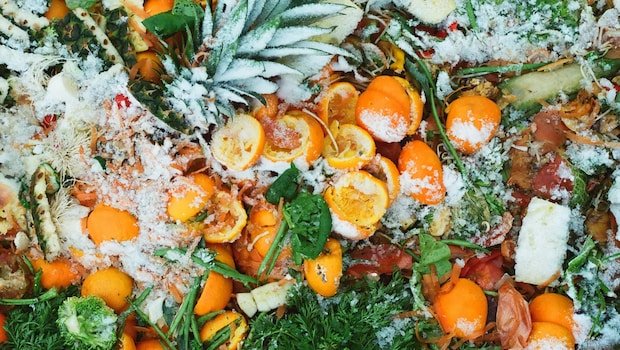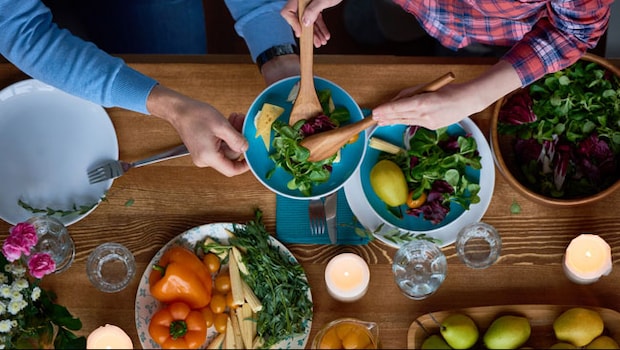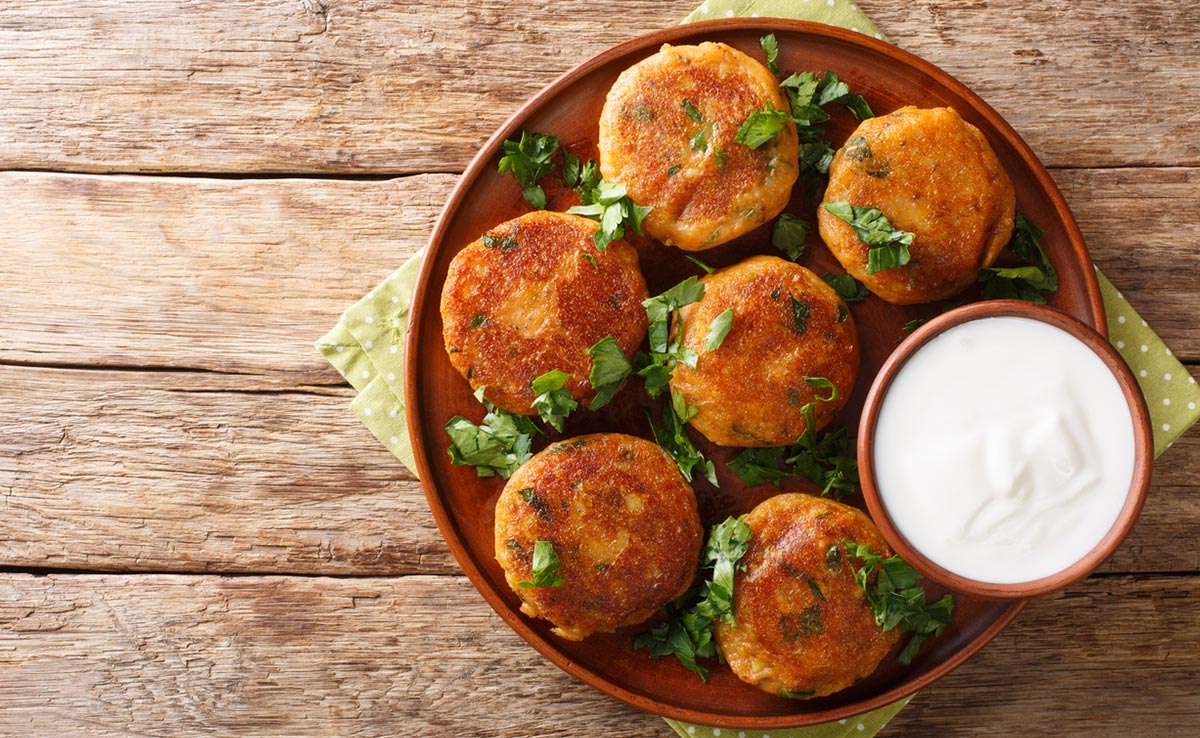Every year, October 16 is marked as World Food Day. First observed in 1981 by the Food and Agriculture Organization (FAO) of the United Nations, this day reminds us that food is more than nourishment. It is life, culture, and community. It is a moment to pause and think about how we grow it, share it, and sometimes unfortunately, waste it. This year's theme, "Hand In Hand For Better Foods And A Better Future," feels more relevant than ever. As hunger and food insecurity affect millions, and as climate change challenges how we produce and consume food, the call for mindful eating has never been stronger.
According to the UNEP Food Waste Index 2024, over 673 million people across the world still face hunger, even as nearly 1.05 billion tonnes of food go to waste each year. In India alone, an estimated 78 million tonnes of food are lost annually.
The crisis is real, but so is our power to change it. And we do not need grand gestures. Instead, a few small and thoughtful actions in our kitchens and dining rooms can make a lasting difference.
Also Read: India Among Top 10 Countries Wasting The Most Food - And What You Can Do To Help
Why Food Waste Matters More Than Ever In 2025?
In 2025, wasting food goes beyond carelessness. It is costly too. Every grain of rice we waste also wastes the water, energy, and labour that went into growing it. According to a 2023 FAO report, a single kilogram of rice takes about 2,500 litres of water to produce. Multiply that by millions of households, and the impact becomes staggering.
The UN Sustainable Development Goal 12.3 aims to halve global food waste by 2030. Reducing waste at home is one of the simplest ways each of us can help fight both hunger and climate change. The movement begins right in our kitchens, one plate at a time.
Also Read: 80% Of Plastic Waste In Himalayas From Single-Use Food Packaging: Report

Photo Credit: iStock
7 Simple Ways To Reduce Food Waste At Home:
1. Plan Your Meals Like A Pro
We all know the feeling: buying a basket of vegetables on Sunday only to find them wilted by Friday. Meal planning is all about being smart and mindful. Check what is already in your fridge before shopping and build meals around what you have. Got half a cauliflower and a cup of leftover dal? You are halfway to a hearty curry.
Pro tip: Create an "Eat Me First" shelf in your fridge for food nearing expiry.
2. Choose 'Ugly' Produce Without Guilt
That apple with a bruise or the crooked carrot you might reject? Perfectly good. In fact, tons of produce never even reach markets because they do not look picture-perfect. By choosing "imperfect" produce, you are helping reduce waste right at the farm.
Several Indian startups such as Khetify and Qudrat now deliver "ugly" fruits and vegetables at discounted rates - cheaper, sustainable, and just as tasty.
Fun fact: If everyone bought just 10 percent more "ugly" produce, reports suggest the world could save up to 3.5 million tonnes of food every year.
3. Cook With Scraps
Before you toss those carrot tops or cauliflower stems, pause and think again. They are ingredients, not waste. Carrot leaves make bright pesto. Cauliflower stems can be sliced for stir-fries. Even banana peels turn into bharta, a trending dish among eco-conscious chefs.
Try this: Collect onion skins, garlic peels, and herb stems in a freezer bag. When full, simmer them into a rich broth and freeze in ice-cube trays. Instant soup base, zero waste.
4. Portion Control: Serve Less, Waste Less
In many Indian homes, abundance equals hospitality, and overflowing plates often end in the bin. Serving smaller portions first and offering seconds if needed is a simple but effective fix.
A Cornell University study found that people who eat from smaller plates waste 20-25 percent less food.
Smart hack: Smaller plates create the illusion of a full meal while helping both the waistline and the planet.
5. Store Smart, Eat Smart
Much of our food spoils because it is stored incorrectly. A few easy fixes can extend its life by days:
- Keep herbs like coriander in a glass of water, just like flowers.
- Wrap leafy greens with a paper towel to absorb excess moisture.
- Freeze leftovers in labelled containers.
- Revive wilting vegetables with a quick ice-water soak.
Bonus tip: "Best before" is not the same as "expiry." Foods past their best-before date may lose flavour but are usually safe, according to FSSAI guidelines. Understanding this difference prevents perfectly edible food from being thrown away.
Also Read: Use By vs Best Before: What's The Difference
6. Get Creative With Leftovers
Leftovers do not have to mean repetition. Many popular dishes were born from resourcefulness.
- Leftover rice? Add lemon, curry leaves, and peanuts for tangy lemon rice.
- Extra rotis? Fill them with sautéed vegetables for quick wraps.
- Leftover dal? Thin it with stock for soup or use it as a sambar base.
Chef's tip: Curries, chillas, and stir-fries are perfect for tossing in assorted odds and ends - edible recycling at its best.
7. Compost What You Cannot Eat
Some scraps are unavoidable, such as coffee grounds and tea leaves. Instead of sending them to landfills, compost them. Balcony compost bins and bokashi systems work well even in small apartments. For enthusiasts, vermicomposting (composting with worms) is odour-free and surprisingly satisfying to maintain.
Fun fact: According to the Swachh Bharat Mission 2024 report, community composting projects in Pune and Indore have cut landfill food waste by more than 30 percent in three years.
Also Read: This Pune Restaurant Charges Extra For Wasting Food, Sparks Online Debate

Photo Credit: iStock
10 Quick Zero-Waste Meal Ideas:
Here are some quick kitchen ideas that turn leftovers into flavourful meals:
- Leftover rice - Make lemon rice or fried rice in under 10 minutes.
- Banana peels - Cook into spicy Bengali-style sabzi.
- Vegetable scraps - Boil into broth cubes for soups.
- Stale bread - Turn into savoury bread upma or croutons.
- Rotis - Reuse as tacos or wraps.
- Leftover dal - Mix with flour to make parathas.
- Overripe fruit - Blend into smoothies or bake into muffins.
- Cooked pasta - Stir-fry with vegetables for a quick snack.
- Boiled potatoes - Mash into cutlets or add to curries.
- Rice water (from washing) - Use for watering plants; it is rich in nutrients.
These small adjustments make your kitchen more sustainable and your meals more creative.
Also Read: Is It Safe To Eat Cold Leftover Food Straight From The Fridge?

Photo Credit: iStock
The Bottom Line:
Every bite you save is a quiet act of hope. When we waste less, we feed more, not just people, but the planet. Food waste is not only about leftovers; it is about wasted effort, energy, and empathy.
So this World Food Day 2025, let us pledge to do better. Plan smart. Store wisely. Eat mindfully. Share generously. Because the journey to a better, fairer future truly begins at the dining table.
About Somdatta SahaExplorer- this is what Somdatta likes to call herself. Be it in terms of food, people or places, all she craves for is to know the unknown. A simple aglio olio pasta or daal-chawal and a good movie can make her day.











